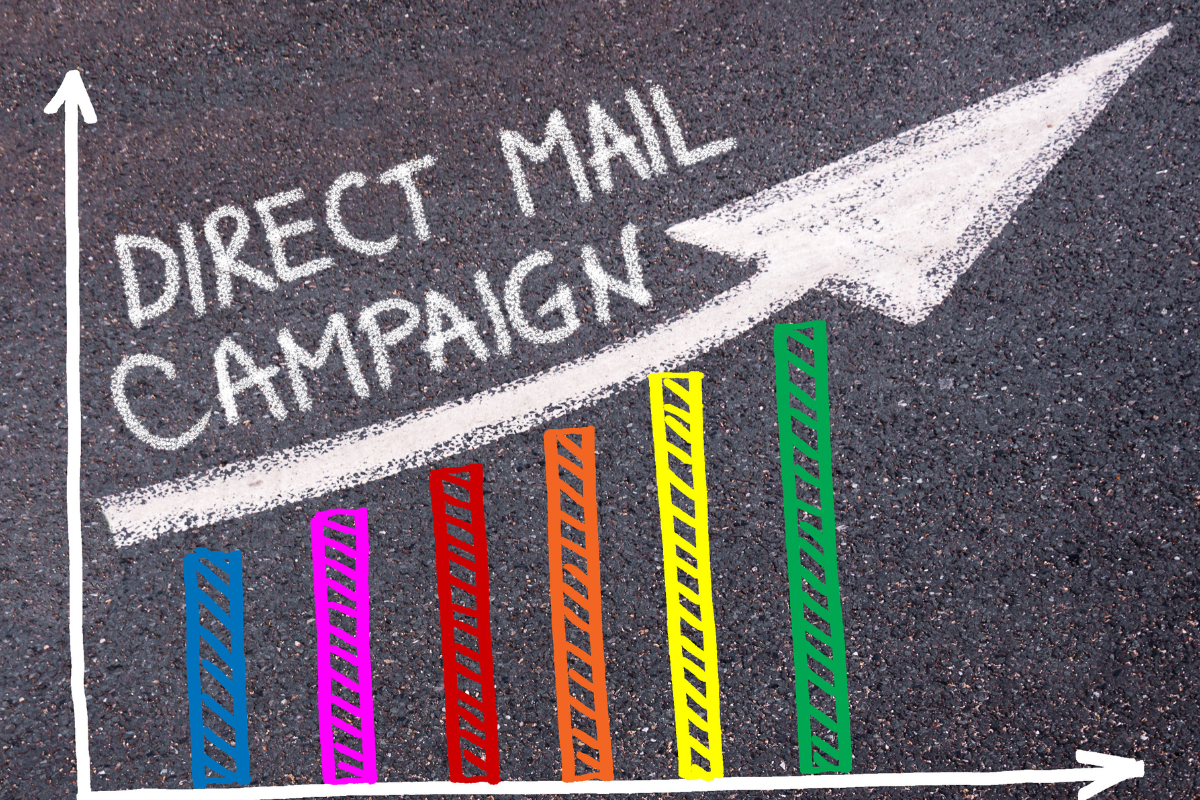
Direct Mail Marketing: A Timeless Strategy In The Digital Age
Posts by Alan TaylorOctober 3, 2023
In the age of digital marketing, many businesses often overlook the power and effectiveness of traditional marketing methods. One such method that has stood the test of time is direct mail marketing.
Even in today’s digital-first world, direct mail remains a potent tool for businesses to reach their target audience.
One of the leading companies in this domain is Cactus Mailing. They have been at the forefront of crafting impactful direct mail campaigns.
Their expertise has helped countless businesses achieve their marketing goals. With the right strategy, direct mail can complement digital efforts.
It’s about blending the old with the new. Furthermore, as the digital landscape becomes increasingly saturated, the tangible nature of direct mail offers a refreshing change, ensuring that your brand’s message is not only seen but also felt and remembered.
The resurgence of direct mail in modern marketing strategies is a testament to its enduring appeal.
1. The Personal Touch Of Direct Mail
Direct mail marketing offers a personal touch that digital methods often lack. When a potential customer receives a physical mail piece, it creates a tangible connection.

This connection can lead to a stronger emotional response. The recipient is more likely to engage with the brand. Personalized mail pieces can make the recipient feel valued.
It’s an experience that digital ads can’t replicate. The tactile sensation of holding a mailer leaves a lasting impression.
It’s a reminder of the brand’s message long after the mail has been read. This personal touch is what sets direct mail apart.
It’s not just about the message, but how it’s delivered. In a world of digital noise, a physical mail piece stands out.
It demands attention and often gets it. The authenticity of a handwritten note or a personalized offer can make all the difference.
2. High Engagement Rates
Direct mail boasts impressive engagement rates. Studies have shown that people spend more time with physical mail than digital ads.
The act of opening an envelope creates a sense of anticipation. The recipient becomes an active participant in the marketing process.
This engagement is further amplified when the mail piece is well-designed. Creative graphics, compelling copy, and a clear call-to-action can work wonders.
The recipient is not just a passive observer but is actively involved. They touch, feel, and interact with the brand’s message.
This level of engagement is hard to achieve with digital methods alone. Moreover, the retention rate of information from direct mail is higher.
People remember what they read and often act upon it. The tangibility of direct mail makes it harder to ignore, ensuring that your message gets the attention it deserves.
3. Targeted Campaigns
One of the strengths of direct mail is its ability to target specific demographics. Businesses can tailor their campaigns based on age, location, purchasing habits, and more.
This level of precision ensures that the message reaches the right audience. It’s not about casting a wide net but about precision.
With the right data, businesses can craft messages that resonate. This targeted approach leads to higher conversion rates.
It ensures that marketing dollars are spent efficiently. The return on investment for direct mail can be substantial when done right.
It’s all about understanding the audience and speaking their language. In a world of generic ads, a tailored message stands out.
The ability to segment and personalize campaigns gives direct mail a competitive edge in the marketing arena.
4. Integrating With Digital
Direct mail doesn’t have to exist in isolation. It can be a part of a larger, integrated marketing strategy.

QR codes, augmented reality, and personalized URLs can bridge the gap between physical and digital. When a recipient scans a QR code, they can be taken to a landing page.
This seamless transition enhances the user experience. It combines the best of both worlds. The personal touch of direct mail with the convenience of digital.
This integrated approach can lead to higher engagement rates. It provides multiple touchpoints for the customer to interact with the brand.
It’s a holistic approach that leverages the strengths of both mediums. By merging traditional and digital strategies, brands can create a cohesive and comprehensive marketing narrative.
5. Measurable Results
One of the myths about direct mail is that it’s hard to measure. This couldn’t be further from the truth. With the right tools and strategies, businesses can track the effectiveness of their campaigns.
Unique coupon codes, personalized URLs, and response cards can provide valuable data. This data can offer insights into customer behavior. It can shed light on what works and what doesn’t.
By analyzing this data, businesses can refine their strategies. They can make informed decisions based on real-world results.
This iterative process can lead to more effective campaigns over time. It’s about continuous improvement and adaptation.
With advancements in tracking technology, the gap between direct mail and digital analytics is narrowing.
6. Trust and Credibility
In an age of digital scams and phishing attacks, trust is paramount. Direct mail, being a physical medium, often carries more credibility.
There’s a sense of legitimacy associated with receiving a physical mail piece. It’s something that can be touched and felt.
This tangibility builds trust. Brands that invest in direct mail are often seen as more credible. They are willing to invest in a medium that requires more effort and resources.
This commitment speaks volumes about the brand’s values. It shows that they care about their customers and are willing to go the extra mile.
This trust can lead to stronger brand loyalty and long-term customer relationships. A well-crafted direct mail piece can serve as a testament to a brand’s dedication and professionalism.
7. Creativity Unleashed
Direct mail offers a canvas for creativity. Unlike digital ads, which are often constrained by platform guidelines, direct mail has fewer restrictions.
Brands can experiment with different formats, sizes, and materials. Pop-up mailers, scented papers, and interactive elements can create a memorable experience.
It’s about pushing the boundaries of what’s possible. This creative freedom can lead to innovative campaigns that stand out.
It’s an opportunity to make a lasting impression. In a competitive market, being different can be a game-changer.
Direct mail offers that opportunity. The limitless possibilities of design and content allow brands to truly showcase their creativity.

8. Cost-Effective
While direct mail might seem expensive upfront, it can be cost-effective in the long run. The high engagement and conversion rates often justify the initial investment.
Moreover, with bulk mailing discounts and efficient printing techniques, costs can be managed. It’s about seeing the bigger picture.
The lifetime value of a customer acquired through direct mail can be substantial. When compared to the cost of acquisition, the return on investment becomes clear.
It’s not just about the initial cost but the long-term benefits. Direct mail, when done right, can offer a competitive advantage.
Strategic planning and budgeting can ensure that direct mail campaigns are both impactful and affordable.
9. Bypassing Digital Fatigue
In today’s world, consumers are bombarded with digital ads. Banner blindness and ad fatigue are real challenges. Direct mail offers a respite from this digital overload.
It’s a breath of fresh air in a cluttered digital landscape. Receiving a physical mail piece can be a pleasant surprise.
It breaks the monotony of endless digital notifications. This novelty can lead to higher engagement rates. It’s about offering something different.
In a world of digital sameness, direct mail can be a beacon of uniqueness. By providing a tangible alternative, direct mail can effectively capture the attention of consumers.
10. Building Long-Term Relationships:
Direct mail is not just about immediate conversions. It’s about building long-term relationships. A well-crafted mail piece can be a conversation starter.
It can lead to further interactions, both online and offline. It’s a stepping stone to a deeper relationship. Brands that invest in direct mail often see higher customer retention rates.
It’s about nurturing relationships over time. Offering value, building trust, and staying top of mind. Direct mail can be a powerful tool in this relationship-building journey.
By fostering genuine connections, brands can cultivate a loyal customer base that lasts.
Conclusion
In conclusion, direct mail marketing remains a relevant and effective strategy in the digital age. With the right approach, it can complement digital efforts and offer a holistic marketing solution.
The synergy between digital and traditional methods can create a marketing mix that resonates with a diverse audience.
As brands seek innovative ways to stand out and connect with their audience, direct mail offers a tried and tested avenue that promises not just reach but meaningful engagement.
The beauty of direct mail lies in its tangible nature. In a world where digital interactions can often feel fleeting and impersonal, the physicality of direct mail provides a sense of permanence and authenticity.
It serves as a reminder that behind every marketing campaign, there’s a real brand with genuine intentions, aiming to connect on a deeper level.
This connection is invaluable in building trust, fostering loyalty, and driving long-term customer relationships.
Moreover, as the digital landscape becomes increasingly cluttered, the importance of diversifying marketing strategies becomes evident.
Relying solely on digital channels can lead to diminishing returns, making it crucial for brands to explore alternative avenues.
Direct mail, with its proven track record, offers a reliable and impactful solution. It’s a medium that has evolved over the years, adapting to the changing needs of consumers and marketers alike.
Furthermore, the integration of technology into direct mail campaigns, such as QR codes and augmented reality, showcases the adaptability of this medium.
It’s a testament to the fact that direct mail is not stuck in the past but is continuously evolving, bridging the gap between traditional and digital.
In the grand tapestry of marketing strategies, direct mail holds a unique and significant place. Its ability to cut through the noise, capture attention, and elicit a response is unparalleled.
As we move forward, it’s clear that direct mail will continue to play a pivotal role in shaping the future of marketing, offering brands a tangible way to connect, engage, and leave a lasting impression.
